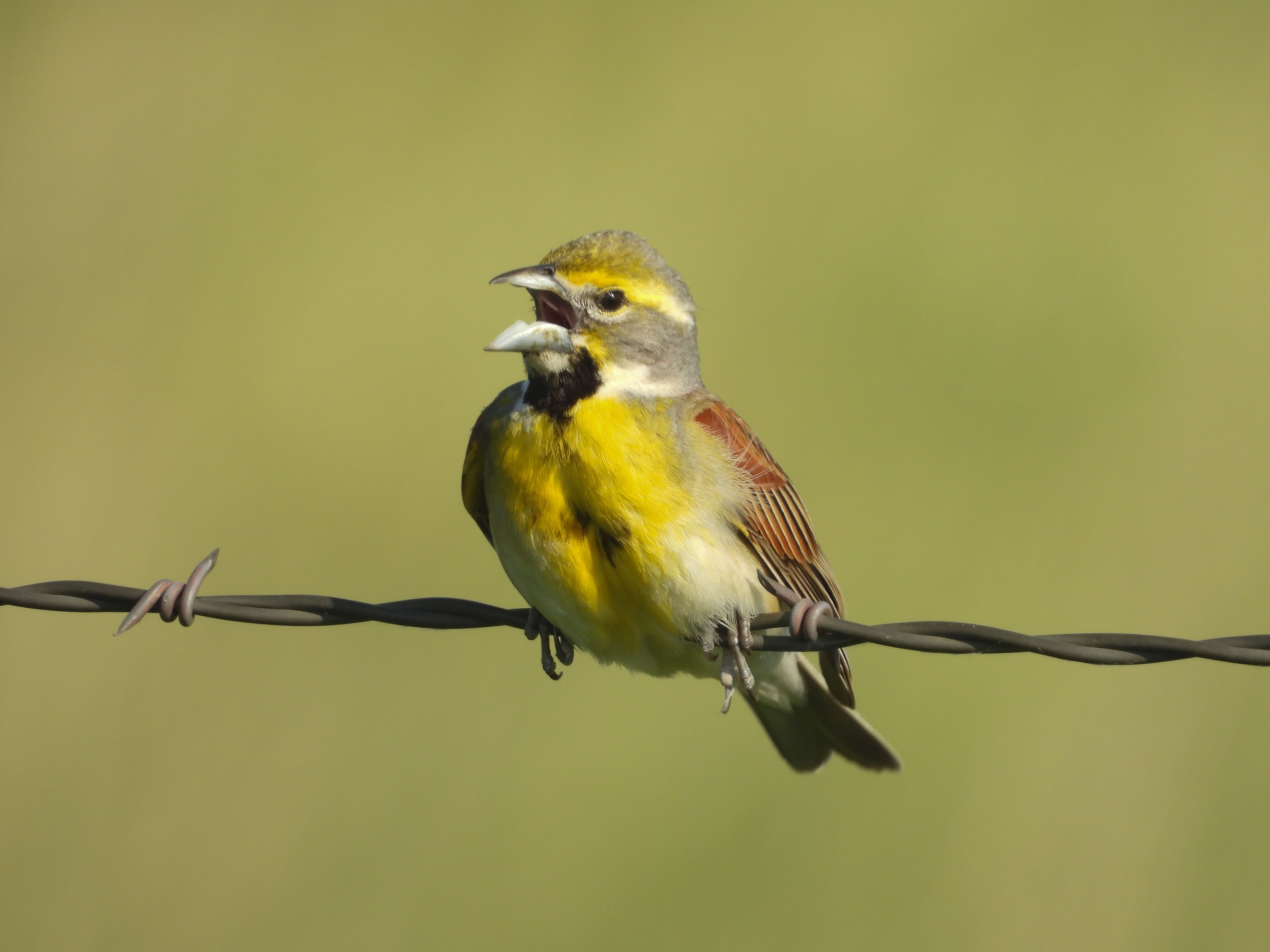
Here at the Crane Trust, we are now wrapping up our breeding bird monitoring season, having spotted 70-80 species on our surveys this year!
The Central Platte River Valley is famous for attracting huge throngs of Sandhill Cranes in the spring, but important birds are here all year - some migrating, and some breeders. The spring into summer is a great time to catch birds during their breeding season - when they are very loud and active.

Tree Swallow
A few days a week, we visit our monitoring sights in a variety of habitats around sunrise to identify different species and their abundance. We identify as many birds as we can in a 15-minute window, enough time to get a good idea of what’s hanging around the area.
As the tallgrass prairie is threatened and shrinking across the Midwest, many grassland species are in danger of declining, as well. Climate change and habitat fragmentation are big threats to bird habitats worldwide. Our goal with the monitoring program is to understand the long-term trends of bird populations and to assess the impact of management practices here on avian communities.

Meadowlark

In this area, we get a high diversity of bird species - some rare and threatened like the Least Tern and Piping Plover. The Crane Trust is actually labeled as a Globally Important Bird Area by Audubon!
Between the tallgrass prairie, wetlands, and river system, we attract grassland bird species, shore and water species, and also shrubland/woodland species. The Bobolink is a grassland fan favorite here, with its unique coloring and rambling song (pictured below).
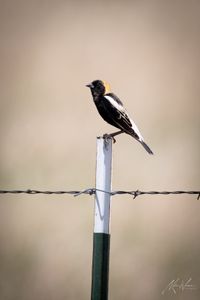
Bobolink, photo by Kylee Warren
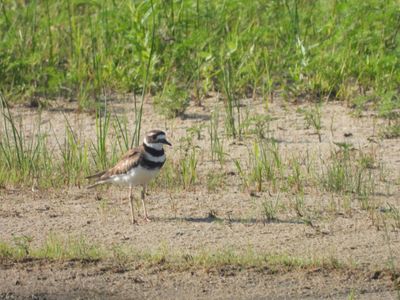
Killdeer

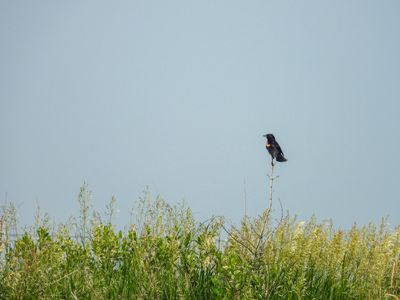
Red-winged Blackbird
A personal favorite bird I’ve had the chance to see is the Wilson’s Phalarope (Phalaropus tricolor) (pictured below). These shorebirds stick around wet meadows during migration and breeding season and feed in bodies of water rich in invertebrates and nutrients. They have a unique way of catching their prey in the water – quickly spinning around in tight circles, creating a whirlpool to funnel food up. They fuel up and raise their young before their migration to South America. Even though the Crane Trust land is barely in the Southeastern corner of their breeding range, the Crane Trust science team finds Wilson’s Phalaropes nearly every summer and in years past has found Wilson’s Phalarope nests in our wet meadows! This is just another example of the importance of protecting these unique but declining habitats.
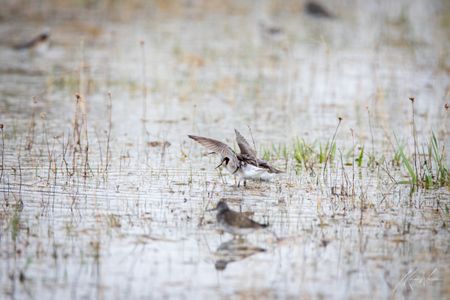
Wilson's Phalarope, photo by Kylee Warren
If you want to practice bird monitoring, try heading into your backyard, a meadow, or river shoreline to see how many different sounds you hear and birds you see. There are plenty of phone apps out there for helping narrow down your search! For a few more weeks, many birds will continue their loud calls and songs, but you can observe them any time of the year.
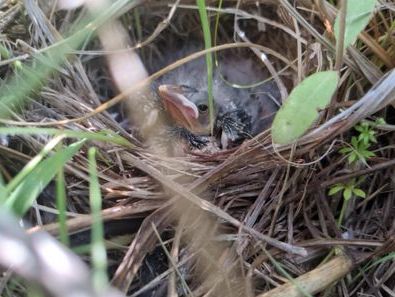
Dickcissel chick
Back soon,
Charlie, Saunders Conservation Fellow

